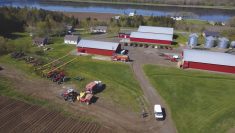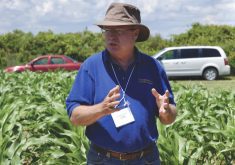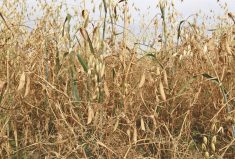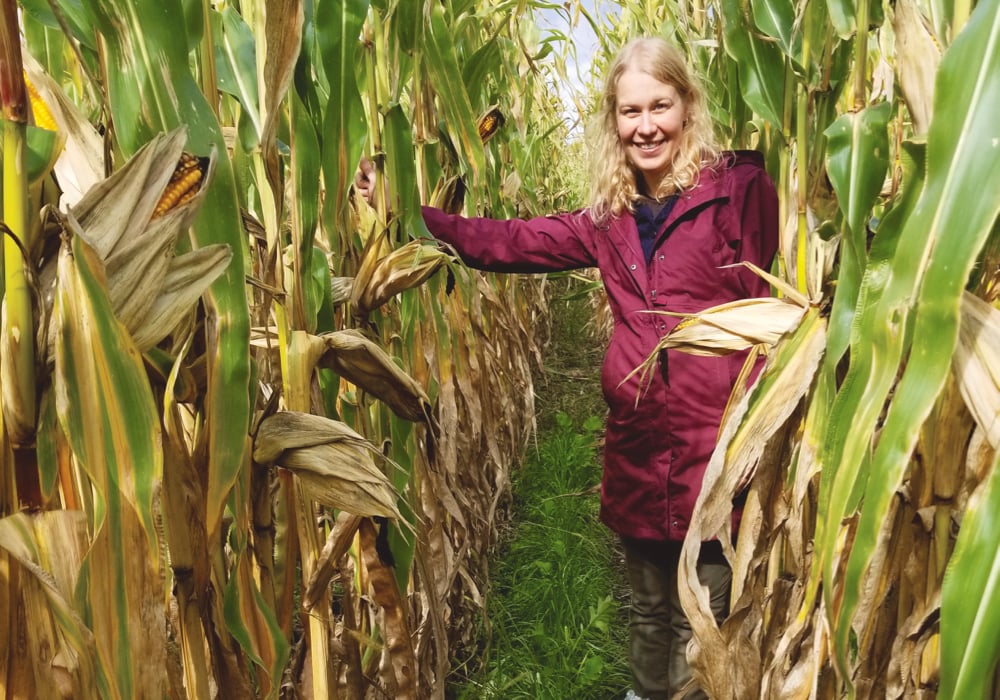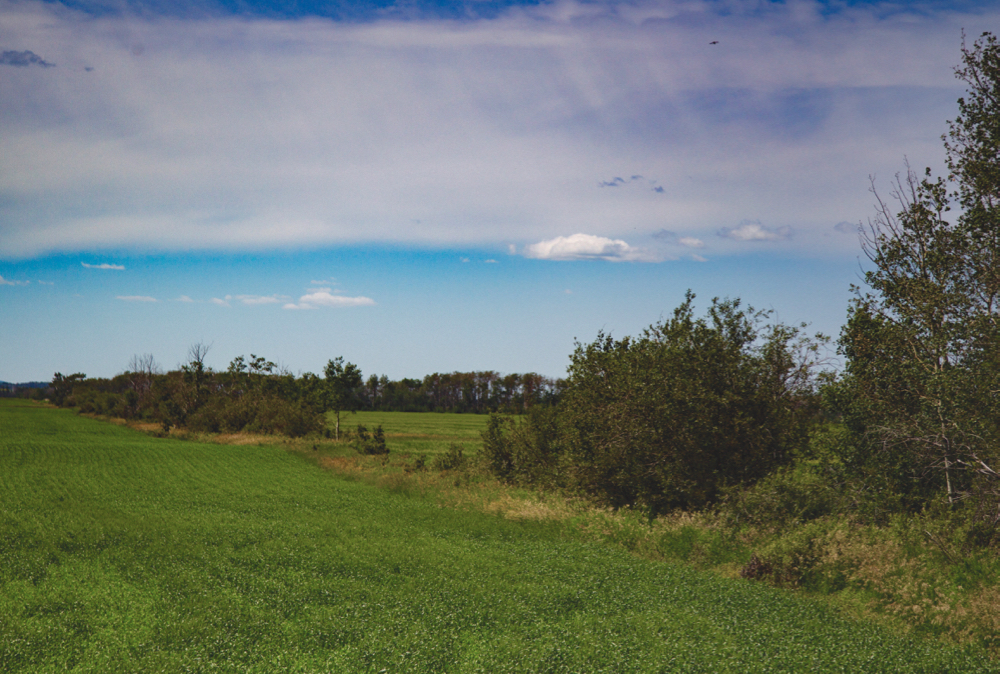“Farmscaping” might be a new term for many western Canadian producers, but it’s shorthand for a familiar set of ideas: building features like shelterbelts and perennial strips into the farm landscape to best utilize their ecological goods and services.
In other words, taking a “whole-farm” approach, with the goal of maximizing profitability and sustainability.
Joanne Thiessen Martens, a technician in the University of Manitoba’s department of plant science, says farmscaping can also include protecting wetlands and riparian areas with buffers and grassed waterways. In more radical cases, it can involve integrating fruit or timber crops into the farm landscape or building water-harvesting systems.
Read Also

Agronomists share tips for evaluating new crop products and tech: Pt. 3
With new products, new production practices and new technology converging on the agriculture industry at a frenetic pace in recent…
“A big part of it is observing what is already happening on the farm and asking how to encourage more of whatever good things you observe there,” she says.
But it can also mean questioning why certain farm features aren’t working and asking how they can be better utilized.
For example, she’s talked to producers dissatisfied with old shelterbelts that capture too much snow or create problems with weed control or equipment mobility. But shelterbelts can be planned around equipment sizes, and designed to be multifunctional and self-maintaining.
“Shelterbelts affect the crops around them, so strategically placing shelterbelts, designing their composition and height, etc. to benefit the crops next to them is an example of farmscaping,” she says.
Shelterbelts
Canada’s best-known shelterbelt program, run through the Prairie Farm Rehabilitation Administration (PFRA), was shut down after federal cuts in 2013.
But resources for producers interested in taking a new approach to shelterbelts occasionally pop up.
Kim Wolfe, a research and development specialist with Manitoba Agriculture, is currently leading a shelterbelt study for Manitoba Beef and Forage Initiatives at its Brookdale and Johnson research sites.
The project, which began last year, will study an intercropping and an “eco-buffer” shelterbelt design. The latter involves planting a mix of small shrubs (rose, currant), medium- or tall-sized shrubs (dogwood, saskatoon), fast-growing trees (aspen, pincherry) and long-lived trees, like bur oak.
Eco-buffers are designed to be self-maintaining after three to five years, Wolfe says. The intercropped twin-row shelterbelts are designed to replace artificial windbreaks for livestock systems.
Besides these benefits, the integration of trees into the farm landscape results in reduced pesticide drift, reduced odours from livestock operations, improved carbon sequestration, improved water infiltration and soil moisture, nutrient filtration and an increase in biodiversity, Wolfe says. Eco-buffers including food or valuable hardwood trees could also provide an alternative revenue source for producers.
Neil and Pat Buchanan have lived with eco-buffers for years on their 480-acre farm near Francis, Sask.
Now retired, the couple planted shelterbelts in 1989 that were later supplemented with trees and shrubs from one of Indian Head Research Station’s first eco-buffer projects in the early 1990s.
Their original shelterbelts, funded through PFRA, included caragana, white spruce, scotch pine, chokecherry, buffalo berry, buckthorn, willow and green ash; the Indian Head researchers supplemented these with tamarack, saskatoon, oak, rose, dogwood and more — totalling nearly 20 species.
After the fourth or fifth year following planting, the Buchanans noticed something wonderful happening on the farm.
“We saw the bird population change dramatically, and more and more species showed up,” says Neil. “At its peak we had about 100 species of birds living on our farm. Some of them aren’t even indigenous to our area.
“It was proof in my mind that we were doing something positive for our environment.”
Following their retirement, the system still works for the farm’s current renters, say the Buchanans. The tree rows are planted roughly 300 feet apart, which accommodates three passes from 100-foot sprayers.
But they are quick to note that the shelterbelts “look a lot closer when they’re fully grown”; new shelterbelts can be built larger, to accommodate multiple passes of 120-foot sprayers.
Water management
Takota Coen runs a mixed organic crop-livestock operation with his parents in central Alberta’s aspen parkland. While he hasn’t personally used the term “farmscaping,” he’s used many others to describe his operation’s ecological scheme: “permaculture design, holistic management, agro-ecological design and resilient farm design,” just to name a few.
On his 250-acre operation, this involves a few elements — including the integration of fruit and nut trees with forage crops, and strategic water harvesting to maximize the area’s limited rainfall.
The latter is a key limiting factor in the region; prior to farmscaping their operation, the Coens had dried up two wells in the past and found it impossible to fill a dugout due to drainage problems.
Through Growing Forward 2’s water management cost-sharing program, Coen built a swale, or on-contour ditch-and-mound system. “It’s an earthen structure designed to intercept overland waterflow and direct it to areas of our choosing where it can be stored in either the soil or dugouts or dams or riparian areas for future use,” explains Coen.

In the summer, the system uses gravity retriculation to spread the water out through a series of pipelines.
One spring, the system caught more water in 10 days than the farm had used in the previous 40 years, says Coen. “Previously that water had just been flowing through our land into the creek. Using our cost-effective strategies we were able to put back decades of water in a single season.”
Coen also used a year-round livestock watering system grant through GF2’s on-farm stewardship program to pay for 50 per cent of the watering system.
Work triangle
But water management is only part of what Coen has been able to accomplish in terms of “farmscaping” his operation.
“The major draw for us was the desire to improve the quality of our ecosystem and leave the land better than we found it, but not kill ourselves in the process with the hard work and the stress,” he says.
Inspired by architects’ concept of the “work triangle” meant to maximize efficiency in the spaces between the fridge, stove and sink in modern kitchens, Coen redesigned the flow of his operation to make it easier to accomplish daily tasks.
“We actually started moving buildings and penning systems around on our farm to create work triangles,” he says.
After the initial infrastructural changes, which took several years to implement, the farm has transitioned into a much smoother workflow overall. The cost of feed and machinery use has decreased, the farm is finishing grass-fed beef at 18 months and pastureland quality has improved.
“There are dozens and dozens of ways we can look at this in terms of economic benefits,” says Coen. “But the biggest benefits are the quality of life benefits we’ve gained in terms of efficiency, the amount of work we’re accomplishing, and the skill and challenge involved in this operation — it’s exciting.




